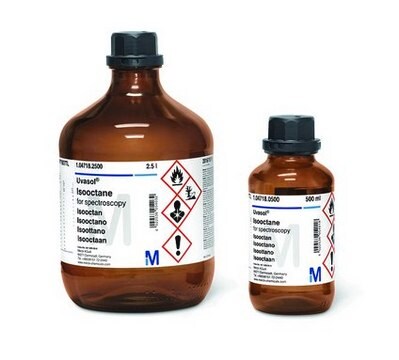342270
Disulfuro de carbono
ReagentPlus®, low benzene, ≥99.9%
About This Item
Productos recomendados
vapor density
2.67 (vs air)
Quality Level
vapor pressure
5.83 psi
product line
ReagentPlus®
assay
≥99.9%
form
liquid
autoignition temp.
212 °F
purified by
glass distillation
expl. lim.
50 %
impurities
<0.05% water
<1 ppm Benzene
evapn. residue
<0.0003%
refractive index
n20/D 1.627 (lit.)
bp
46 °C (lit.)
mp
−112-−111 °C (lit.)
density
1.266 g/mL at 25 °C (lit.)
SMILES string
S=C=S
InChI
1S/CS2/c2-1-3
InChI key
QGJOPFRUJISHPQ-UHFFFAOYSA-N
¿Está buscando productos similares? Visita Guía de comparación de productos
Categorías relacionadas
Application
- To synthesize hydroxynaphthyl ketones via Friedel-Crafts acylation and demethylation.
- In the regioselective bromination of binaphthols.
Legal Information
signalword
Danger
Hazard Classifications
Acute Tox. 4 Inhalation - Eye Irrit. 2 - Flam. Liq. 2 - Repr. 2 - Skin Irrit. 2 - STOT RE 1
target_organs
Peripheral nervous system,Central nervous system,Cardio-vascular system,Eyes
Storage Class
3 - Flammable liquids
wgk_germany
WGK 2
flash_point_f
-22.0 °F - closed cup
flash_point_c
-30 °C - closed cup
Certificados de análisis (COA)
Busque Certificados de análisis (COA) introduciendo el número de lote del producto. Los números de lote se encuentran en la etiqueta del producto después de las palabras «Lot» o «Batch»
¿Ya tiene este producto?
Encuentre la documentación para los productos que ha comprado recientemente en la Biblioteca de documentos.
Los clientes también vieron
Nuestro equipo de científicos tiene experiencia en todas las áreas de investigación: Ciencias de la vida, Ciencia de los materiales, Síntesis química, Cromatografía, Analítica y muchas otras.
Póngase en contacto con el Servicio técnico









